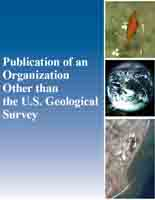Expanding barriers: Impassable gaps interior to distribution of an isolated mountain-dwelling species
Links
- More information: Publisher Index Page (via DOI)
- Data Release: USGS data release - Ordinal-occurrence states of American pikas in the northern Sierra Nevada and southern Cascade Range from surveys during 2014-2019
- Open Access Version: Publisher Index Page
- Download citation as: RIS | Dublin Core
Abstract
Global change is expected to expand and shrink species' distributions in complex ways beyond just retraction at warm edges and expansion at cool ones. Detecting these changes is complicated by the need for robust baseline data for comparison. For instance, gaps in species' distributions may reflect long-standing patterns, recent shifts, or merely insufficient sampling effort. We investigated an apparent gap in the distribution of the American pika, Ochotona princeps, along the North American Sierra Nevada. Historical records from this region are sparse, with ~100 km separating previously documented pika-occupied sites. Surveys during 2014–2023 confirmed that the gap is currently unoccupied by pikas, and evidence of past occurrence indicates that the gap has expanded over time, likely due to contemporary global change. Sites lacking evidence of past pika occurrence were climatically and geographically more distant from sites with signs of recent (former) occurrence and currently occupied sites. Formerly and currently occupied sites were partially climatically distinct, suggesting either metapopulation-like dynamics or an extinction debt that may eventually result in further population losses at the edge of suitable climate space. The Feather River gap aligns with one of several “low points” in the otherwise continuous boreal-like conditions spanning the Cascade Range and Sierra Nevada and is coincident with discontinuities in ranges of other mammals. These results highlight the potential for climate-driven fragmentation and range retraction in regions considered climatically and geographically interior to a species' overall distribution.
Study Area
| Publication type | Article |
|---|---|
| Publication Subtype | Journal Article |
| Title | Expanding barriers: Impassable gaps interior to distribution of an isolated mountain-dwelling species |
| Series title | Ecosphere |
| DOI | 10.1002/ecs2.70223 |
| Volume | 16 |
| Issue | 6 |
| Publication Date | June 10, 2025 |
| Year Published | 2025 |
| Language | English |
| Publisher | Ecological Society of America |
| Contributing office(s) | Northern Rocky Mountain Science Center |
| Description | e70223, 19 p. |
| Country | United States |
| State | California |
| Other Geospatial | southern Cascade Range, northern Sierra Nevada |


